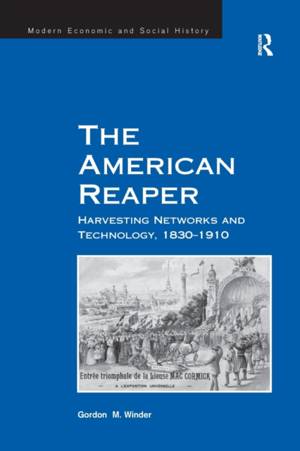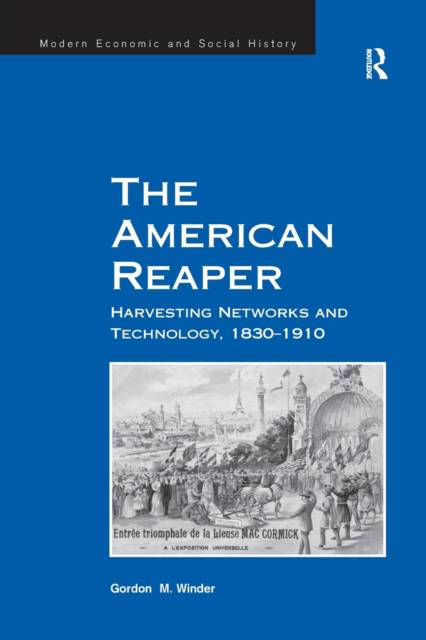
- Retrait gratuit dans votre magasin Club
- 7.000.000 titres dans notre catalogue
- Payer en toute sécurité
- Toujours un magasin près de chez vous
- Retrait gratuit dans votre magasin Club
- 7.000.0000 titres dans notre catalogue
- Payer en toute sécurité
- Toujours un magasin près de chez vous
The American Reaper
Harvesting Networks and Technology, 1830-1910
Gordon M Winder
Livre broché | Anglais
106,95 €
+ 213 points
Format
Description
The American Reaper adopts a network approach to account for the international diffusion of harvesting technology from North America, from the invention of the reaper through to the formation of a dominant transnational corporation, International Harvester. Much previous historical research into industrial networks focuses on industrial districts within metropolitan centres, but by focusing on harvesting - a typically rural technology - this book is able to analyse the spread of technological knowledge through a series of local networks and across national boundaries. In doing so it argues that the industry developed through a relatively stable stage from the 1850s into the 1890s, during which time many firms shared knowledge within and outside the US through patent licensing, to spread the diffusion of the American style of machines to establishments located around the industrial world. This positive cooperation was further enhanced through sales networks that appear to be early expressions of managerial firms. The book also reinterprets the rise of giant corporations, especially International Harvester Corporation (IHC), arguing that mass production was achieved in Chicago in the 1880s, where unprecedented urban growth made possible a break with the constraints felt elsewhere in the dispersed production system. It unleashed an unchecked competitive market economy with destructive tendencies throughout the transnational 'American reaper' networks; a previously stable and expanding production system. This is significant because the rise of corporate capital in this industry is usually explained as an outworking of national natural advantage, as an ingenious harnessing of science and technology to solve production problems, and as a rational solution to the problems associated with the worst forms of unregulated competition that emerged as independent firms developed from small-scale, artisanal production to large-scale manufacturers, on their own and within the separate and isolated US economy. The first study dedicated to the development and diffusion of American harvesting machine technology, this book will appeal to scholars from a diverse range of fields, including economic history, business history, the history of knowledge transfer, historical geography and economic geography.
Spécifications
Parties prenantes
- Auteur(s) :
- Editeur:
Contenu
- Nombre de pages :
- 280
- Langue:
- Anglais
Caractéristiques
- EAN:
- 9781138261280
- Date de parution :
- 15-11-16
- Format:
- Livre broché
- Format numérique:
- Trade paperback (VS)
- Dimensions :
- 156 mm x 234 mm
- Poids :
- 394 g

Les avis
Nous publions uniquement les avis qui respectent les conditions requises. Consultez nos conditions pour les avis.






